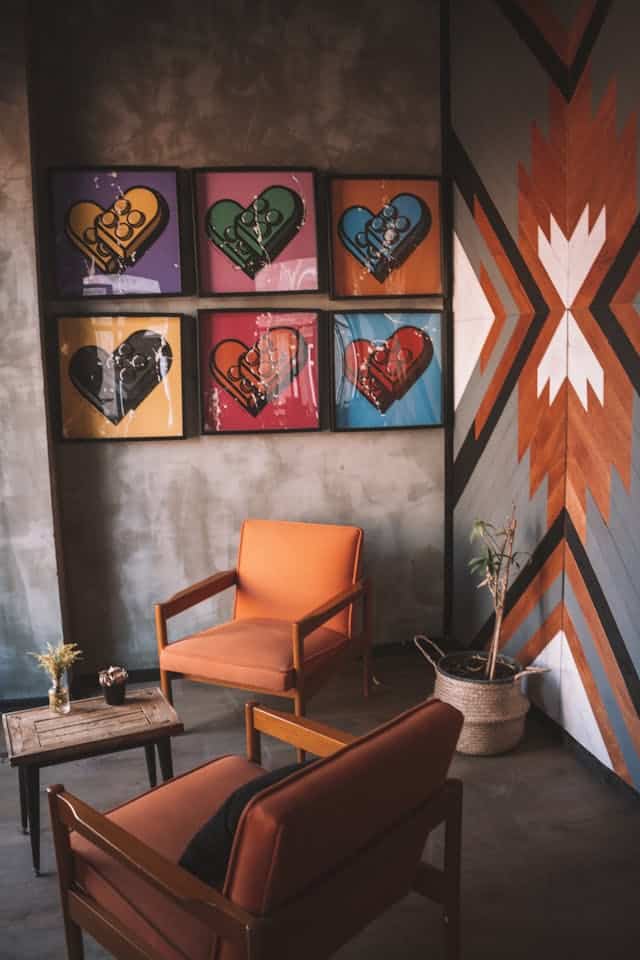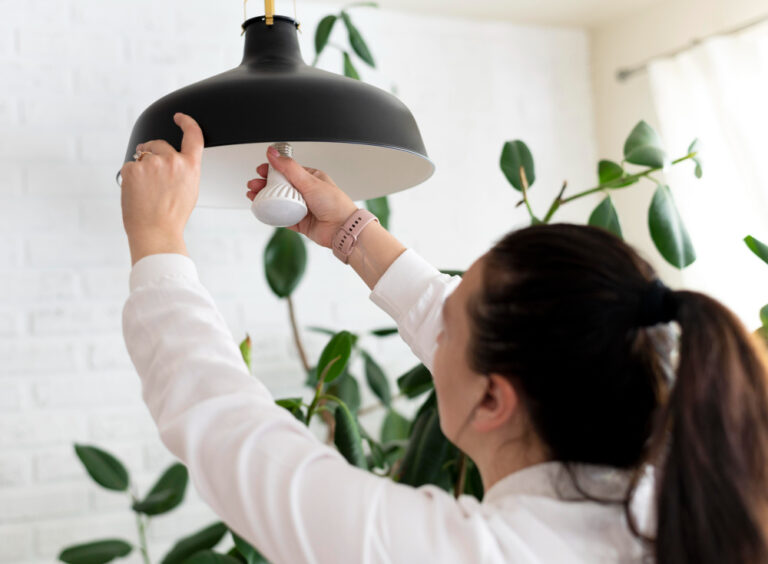What Is Mid Century Modern Interior Design Style? The Ultimate Guide
The Fascinating Journey of Mid Century Modern Interior Design style: More Than Just an Aesthetic
Are you excited to get to know about the Mid Century Modern Interior Design style?
I must remind you that imagine stepping into a space where every design element tells a story of innovation, where furniture isn’t just functional but a work of art, and where every curve and line speaks of a revolutionary design philosophy.
This is the essence of mid century modern interior design—a style that transcends mere decoration and becomes a profound expression of human creativity and vision.

The Philosophical Roots (History) of Mid Century Modern Design

Mid century modern interior design style emerged from a pivotal moment in human history—the post-World War II era.
I must say it wasn’t just a design trend; it was a cultural revolution that reimagined how people interact with their living spaces.
“This period represented more than aesthetic innovation,” explains Dr. Elena Martinez, an architectural historian at the Design Heritage Institute.
“It was a collective reimagining of human potential, reflected through design that emphasised hope, progress, and democratic accessibility.”
The movement challenged traditional design constraints, introducing radical concepts that prioritised both form and function.
Designers like Charles and Ray Eames, George Nelson (furniture by George Nelson), and Arne Jacobsen became not just furniture creators but visionary architects of human experience.
Foundational Principles of Mid-Century Modern Interior Design
Philosophical Underpinnings
Mid century modern design is rooted in several core philosophical principles:
- Form Follows Function: Every design element must serve a purpose beyond mere aesthetics.
- Integration with Nature: Creating harmony between indoor and outdoor spaces.
- Simplicity and Elegance: Removing unnecessary ornamentation while maintaining visual interest.
- Democratisation of Design: Making good design accessible to a broader population.
Key Characteristics That Define Mid Century Modern Interior Design
Mid century modern interior design style is characterised by a deliberate philosophy that goes far beyond visual appeal. At its heart are several fundamental principles that continue to inspire designers and homeowners alike:
1. Harmony with Nature

Unlike previous design movements that viewed interior spaces as disconnected from their environment, the mid century modern design sought profound integration.
Large windows, organic materials, and design elements that blur indoor-outdoor boundaries became hallmarks of this approach.
Architects and designers viewed buildings and interiors as living, breathing ecosystems rather than static structures.
2. Functionality as Aesthetic

“Form follows function” was more than a design mantra—it was a radical reimagining of design’s purpose.
Every piece, whether a chair, lamp, or entire architectural structure, needs to serve a clear, practical purpose while maintaining aesthetic elegance. This meant removing unnecessary ornamentation and focusing on essential, meaningful design elements.
3. Clean Lines and Organic Shapes

I must say the hallmark of mid century modern decor is its commitment to clean, uncluttered lines paired with organic, sometimes playful shapes.
Furniture pieces feature slim legs, geometric forms, and a seemingly effortless blend of angular and curved elements.
Think of iconic designs like the Eames lounge chair—a perfect representation of this design philosophy where comfort meets artistic expression.
4. Material Innovation
The mid-century period was a remarkable era of material experimentation. Designers weren’t just working with traditional woods and metals; they were pioneers exploring new possibilities offered by emerging technologies.
Moulded plywood allowed for unprecedented furniture shapes that could conform to human body contours.
Fibre glass introduced lightweight, durable design elements that were previously unimaginable.
Plastics opened up entirely new colour palettes and structural possibilities, democratising design in ways never seen before.
5. Colour and Texture: A Bold Visual Language
Mid century modern interior design style colour schemes were anything but timid. Unlike minimalist approaches that rely on stark neutrals, this design philosophy embraced a vibrant, purposeful colour palette:

“Colour was never just decoration,” notes Maria Rodriguez, a vintage design restoration expert. “Each colour choice was a statement, a way of expressing the optimism and forward-thinking spirit of the era.”
Imagine rich mustard yellows representing unbridled creativity, deep teals symbolising depth and contemplation, warm oranges radiating energy, and earthy browns connecting spaces to natural elements.
These weren’t random selections but carefully curated expressions of a broader cultural narrative.
Mid Century Modern Furniture Ideas: Iconic Designs That Defined an Era
Furniture wasn’t just functional—it was sculptural art. Iconic designers like Charles and Ray Eames, Arne Jacobsen, and George Nelson created pieces that transcended time:
The Eames Lounge Chair

A perfect embodiment of mid century modern philosophy, this chair represents the perfect marriage of comfort, craftsmanship, and aesthetic innovation.
Its moulded plywood shell and luxurious leather upholstery continue to inspire designers decades after its creation.
Organic and Geometric Forms
Furniture designs featured:

- Tapered, slim legs
- Curved, organic shapes
- Geometric silhouettes
- Minimal ornamentation
- High functionality
Architectural Integration
Mid-century modern design wasn’t confined to interior spaces—it reimagined entire architectural concepts:
- Large windows blurring indoor-outdoor boundaries
- Open floor plans promoting social interaction
- Built-in furniture maximising space efficiency
- Natural light as a critical design element
- Flat or low-pitched roofs creating clean horizontal lines
Bringing Mid Century Modern Home Interior to Life
For those looking to embrace this design philosophy, start small. A statement chair can transform an entire room. The iconic Eames lounge chair, with its moulded plywood and leather cushions, isn’t just a seat—it’s a piece of design history. Consider mixing vintage finds with modern reproductions to create a curated, authentic look.
Furniture Selection: Less is Definitely More

Mid century modern furniture follows a “quality over quantity” approach. Each furniture piece should serve the purpose of the room while maintaining aesthetic appeal.
Low-profile sofas with clean geometric lines tapered wooden legs on chairs and tables, and minimal ornamentation are key characteristics to look for.
Beyond Furniture: Creating a Holistic Mid Century Modern Experience

The magic of mid century modern interior design extends beyond furniture. It’s about creating a cohesive environment in the space that feels both timeless and forward-thinking.
Large windows that seamlessly merge the line between indoor and outdoor spaces, geometric patterns in artwork, and strategic lighting placement that highlights architectural elements are crucial components.
Lighting: The Unsung Hero of Mid Century Design

Pendant lights with metallic finishes, floor lamps with distinctive shapes, and sculptural table lamps aren’t just light sources—they’re art pieces. Designers like George Nelson created lighting fixtures that were as much about aesthetic expression as illumination.
Sustainability and Mid Century Modern Design

Interestingly, mid century modern design was inherently sustainable before sustainability became a buzzword. The focus on quality craftsmanship, durable materials, and timeless design meant that these pieces were built to last—directly contradicting the disposable furniture culture of today.
Budget-Friendly Tips for Mid Century Modern Home Interior
You don’t need a massive budget to incorporate this style. Vintage thrift store finds, carefully selected reproduction pieces, and DIY refinishing can help you create an authentic mid century modern look without breaking the bank.
Practical Mid Century Modern Decor Ideas for Your Home
Implementing mid-century modern design isn’t about strict historical recreation but intelligent, thoughtful adaptation. Start with key statement pieces that capture the era’s essence—perhaps an Eames lounge chair or a geometric pendant light. Focus on furniture with clean lines, tapered legs, and organic shapes.
Living Room Transformation

To incorporate mid-century modern design in your living room, start with a statement piece like a vintage-inspired sofa with tapered legs.
Pair it with a sculptural coffee table featuring geometric lines. Add accent chairs in bold colours, and complement the space with bold and abstract art or geometric wall hangings.
Dining Area Elegance

In the dining area, consider a wooden table with clean lines, surrounded by chairs that showcase the era’s love for organic shapes. A pendant light with a distinctive geometric lamp shade can serve as a focal point, instantly lifting the dining room’s aesthetic.
Bedroom Sanctuary

For the bedroom, focus on minimal, functional furniture. A low-profile bed with a simple headboard, paired with nightstands featuring slim legs and minimal ornamentation, captures the essence of mid-century modern interior design. Use textured bedding in muted or bold colours to add depth and interest.
Incorporating Modern Technology with Classic Design
While mid-century modern design originated in the mid-20th century, it remains remarkably adaptable to contemporary living.
Modern smart home technologies can be seamlessly integrated without disrupting the classic aesthetic. Consider smart lighting systems that can be concealed or designed to complement the clean lines of your furniture.
Common Mistakes to Avoid
Avoid over-cluttering your space or mixing too many design styles. Mid-century modern is about simplicity and intentionality.
Each different furniture piece or decor item should have a purpose and help the overall design narrative.
Additionally, be cautious about using too many reproduction pieces—authenticity and quality matter more than quantity.
Conclusion
Mid-century modern interior design is more than a style—it’s a celebration of human creativity, functionality, and aesthetic harmony. By understanding its principles and thoughtfully incorporating design elements into your spaces, you can create spaces that are not just visually stunning but also deeply meaningful.






